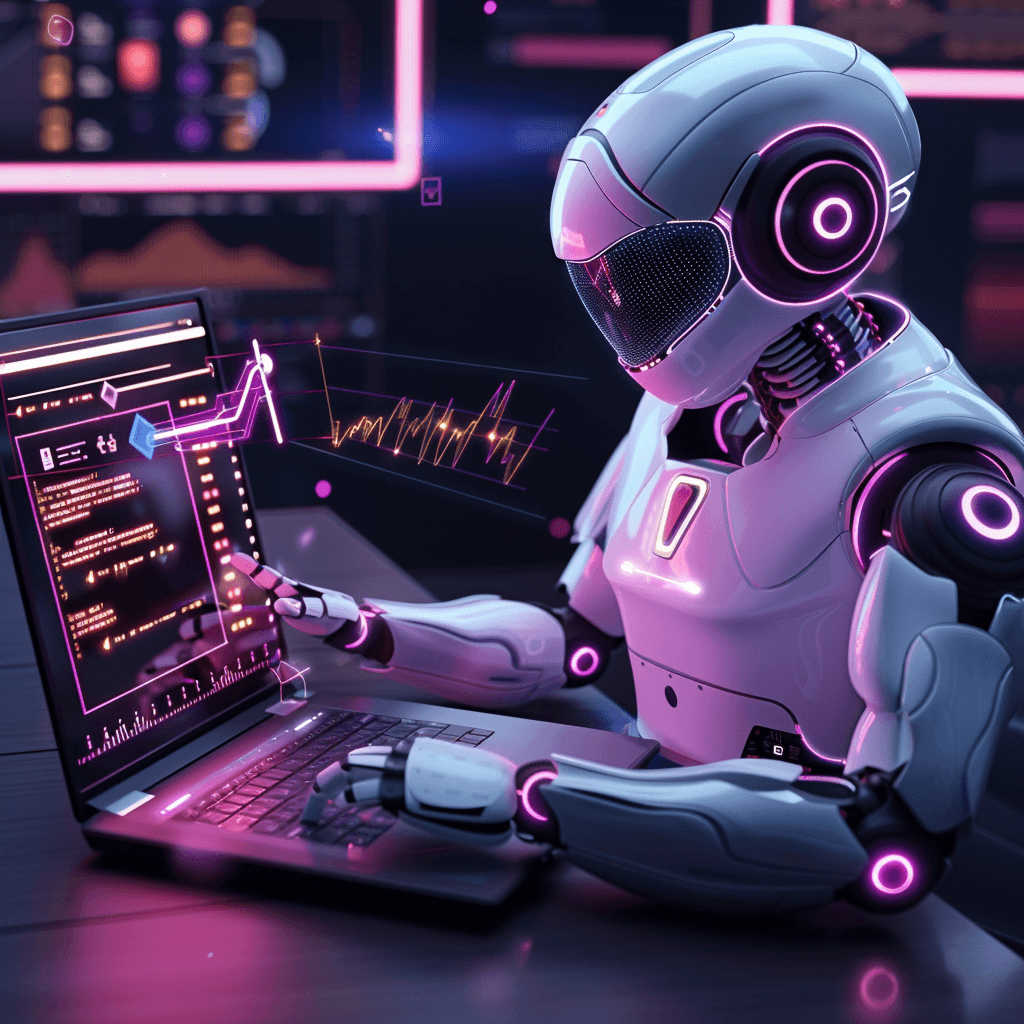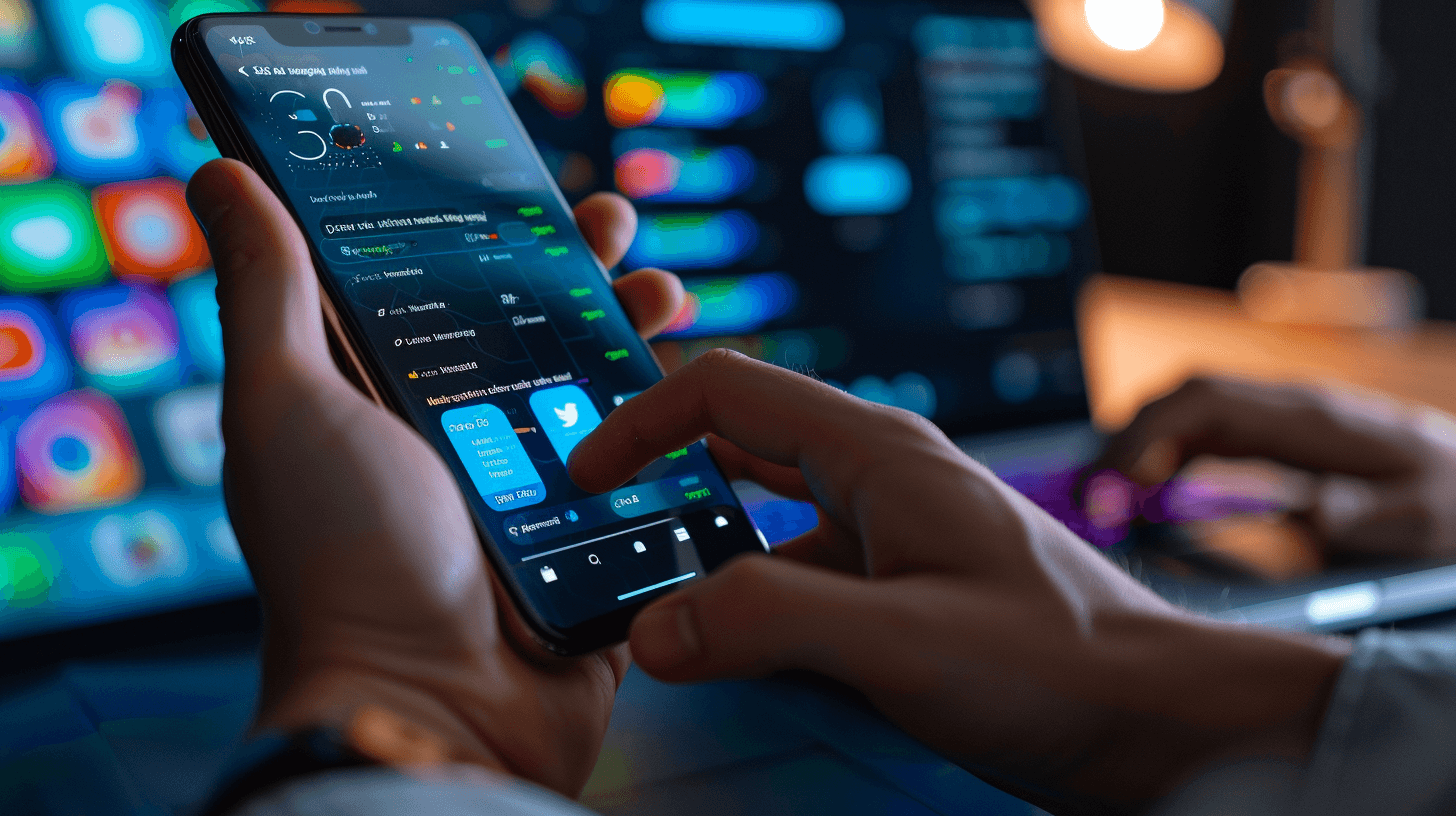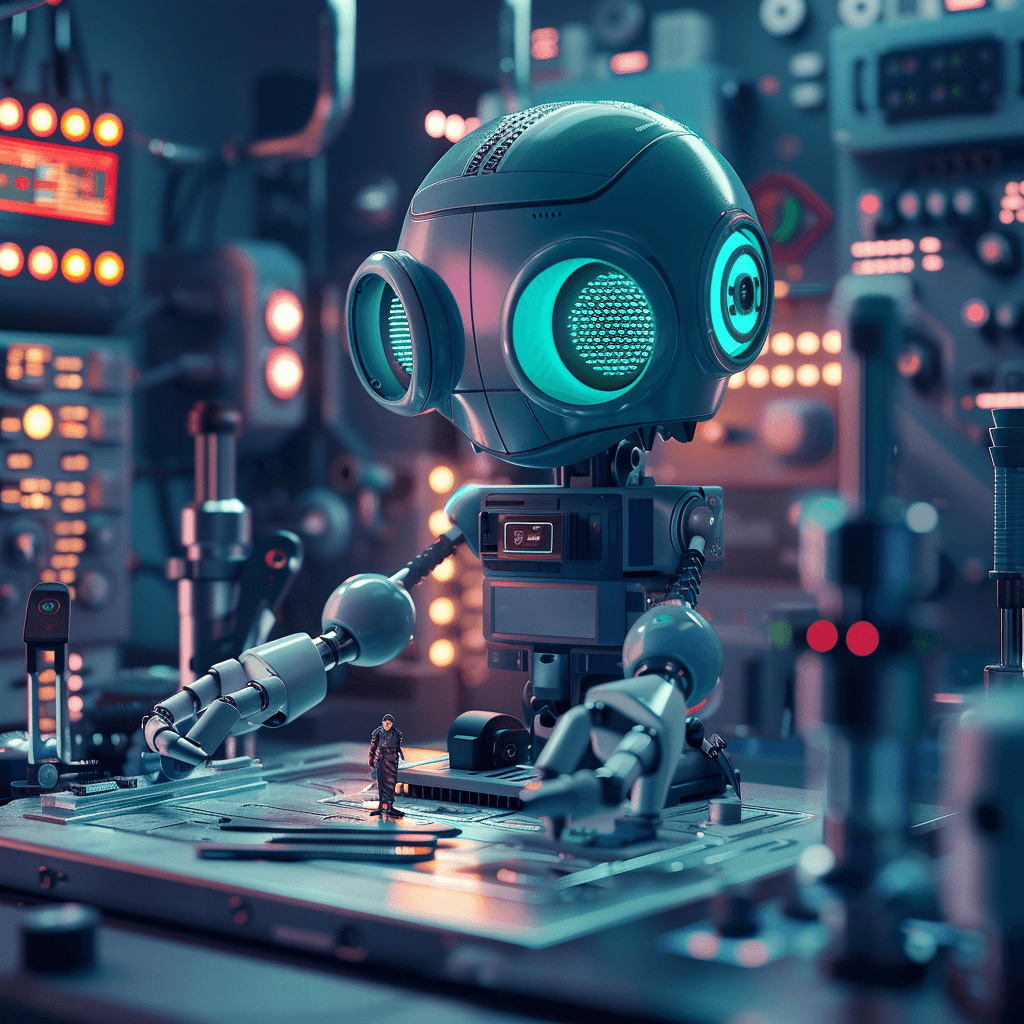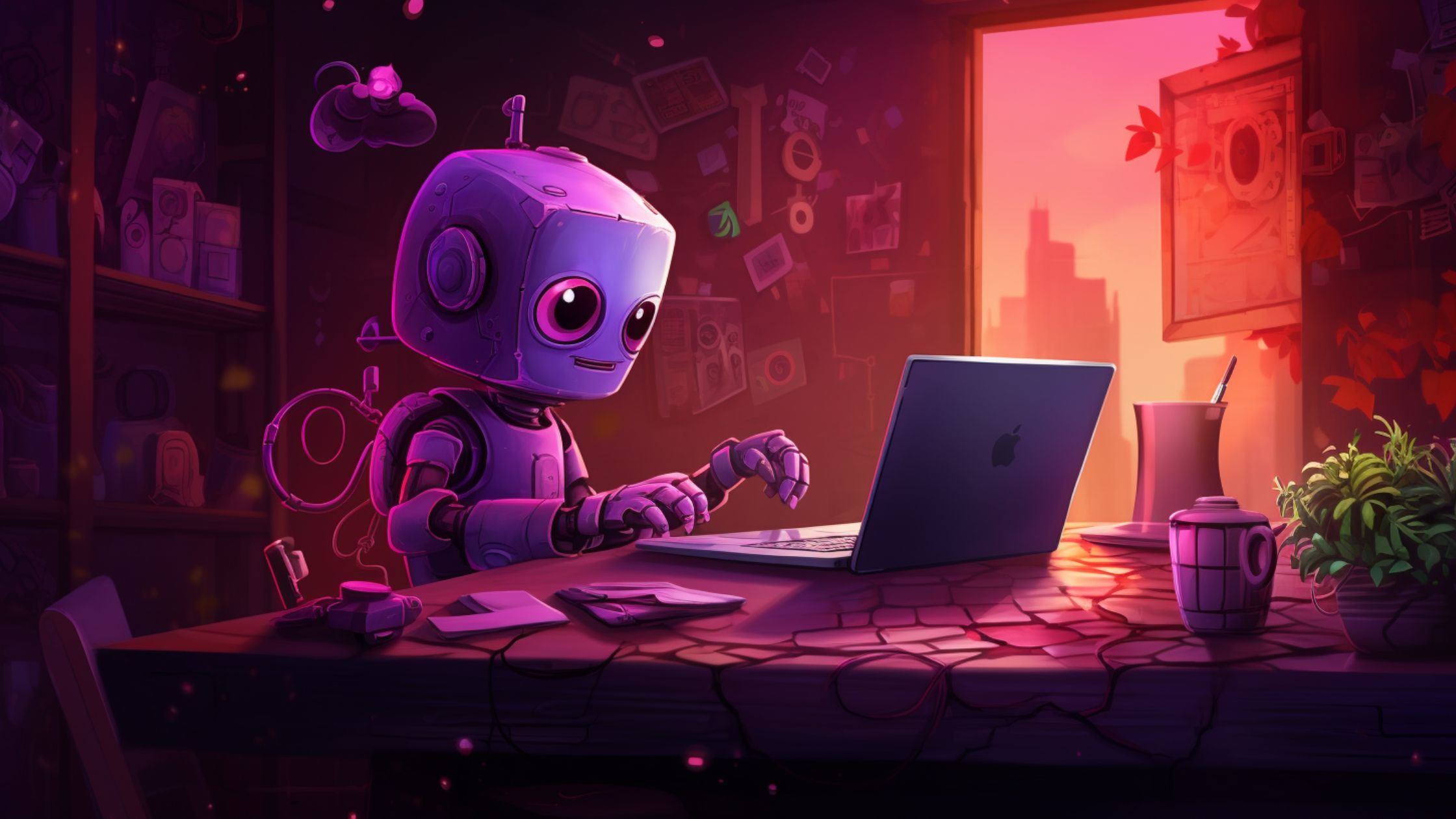AI development is one of our generation's most significant technological trends. As of 2024, the global AI market is projected to surpass $184 billion and grow at an annual rate of 28.46% over the next six years. It is undeniable that AI is a crucial component in UX design.

AI helps designers and developers at every stage of the UX process, making their work easier. UX designers may be able to develop better products for their customers by utilizing AI and predictive analytics, which aim to determine what people need or act in a specific situation.
In this post, we will cover the effect of AI on user experience and explain why it's critical to consider these effects when creating intelligent machines.
How Artificial Intelligence Can Improve User Experience Design
Predictive systems, audio processing, speech-to-text, and NLP are all examples of artificial intelligence systems. The intellect of AI systems and that of humans are very different. However, companies may benefit from their complementing characteristics. Data structuring and tabulation are only two examples of the mundane work that UX researchers do.
AI systems can quickly and efficiently perform repetitive jobs, freeing people to focus on more complex activities that need judgment and compassion. However, when it comes to organizing and displaying data, artificial intelligence in user experience will always be ahead of human capabilities.
UX Designers and AI: How They Can Work Together
Artificial intelligence's capacity to give options and speed decision-making may be helpful to UX designers. For quite some time, developers and designers have used automation in products and machine learning. Let's think about how AI in UX programming is capable of helping designers.
- Judgment Calls
UX designers may benefit from artificial intelligence's ability to present options and facilitate rapid decision-making. Predictions from machine learning are grounded in past data to streamline the decision-making process and save time.
- Relationship Between Humans & AIs
When we think about the best examples of human-machine interaction, Siri and Alexa are two excellent instances because of their voice assistant capabilities. By collecting and analyzing user data, AIs can make accurate predictions about human behavior, which advances the field of human-AI interaction. UX designers may use Human-AI bonding to boost the app's UI and UX quality at any stage of its development.
User experience designers often base their work on statistical examinations of user behavior when creating interfaces. On the other hand, AI can process massive volumes of data and produce actionable insights when given the same task. All parties involved would benefit if user experiences were created after evaluating large amounts of data. We don't need to spend any effort on data analysis for UX Design if we use AI. Think about your product's usefulness to your target audience after you've analyzed all that user data.
- Providing Benefits to Users
AI-driven software tailors its features to each user. Programmers may train artificial intelligence to improve the user experience and the results. A better Return on Investment (ROI) is guaranteed directly by providing consumers and users with the highest possible value.
Suggested Read
What role does UX play in the success of a product?
View Blog
The Influence of AI on User Experience
Due to the rapid development of new technology, user experience is rapidly evolving. Artificial intelligence is a technology whose development and effects on the user experience strategy are swiftly advancing.
AI is already altering users' experiences with digital devices and services, and this trend is only projected to increase in the future.
I think the roles of UX designers and machine learning (ML) specialists are comparable in specific ways. Both collect information, evaluate user activity, and predict people's behavior.
Thanks to AI and ML, designers can now create more satisfying mobile app interactions. Let's look at how AI has altered how consumers interact with the products they buy.
- Simplified User Interfaces
Simple interfaces make it easier for consumers to navigate and learn more about a website or app. Artificial intelligence may analyze past data to predict a user's next move or inquiry and return relevant information. Through advancements in AI, companies can now prioritize consumers' requests.
- Automation
The human element is essential for successfully executing many repeated, tedious jobs, notwithstanding their lack of significance. Picture resizing, color correction, and image cropping are just a few examples of the kinds of operations that AI may automate.
Researchers in the field of artificial intelligence have developed cutting-edge technological solutions that can do all of these actions automatically. For instance, Adobe's stitch capability can recognize patterns in photographs and assist designers in stitching them together.
- Visuals
The patterns, modules, and elements that make up a design system define a product's or brand's visual vocabulary. Companies like Airbnb and Google have developed design systems that UX designers can utilize to deliver a pleasant and functional user experience consistently.
AI and ML integration enables the collection and analysis of metrics that inform product teams about how each user interacts with the interface's components. A design system's ability to analyze data and determine what's working and what isn't is directly correlated to the quality of the user experience it can provide.
- Post-Production Visuals
Autodraw, Artisto, and Prisma are just a few of the numerous applications that leverage AI technology for human-face identification, thanks to a breakthrough by the creators of artificial intelligence. In addition, photos may apply blur and shadow effects to human faces.
- Personalization
Personalization is another AI-powered feature that has significantly influenced the quality of the service provided to end users. Applying personalization techniques may achieve a better and more efficient user experience.
Suggested Read
How Does Agile Work With UX Design?
View Blog
Limitations of Artificial Intelligence in UI Design
- Mistakes in Analyzing the Data
AI systems can learn only via the data we feed into AI systems. However, our findings may be wrong or distorted if the information we provide on the computer is untrustworthy or missing. The quality of the data we feed AI will determine how well it performs.

- The Problem of Biased Algorithms
We cannot rely on these algorithms to provide fair outcomes if they are flawed or prejudiced. The primary source of bias in algorithms is the partial, self-serving method in which they were initially built. Algorithmic prejudice is widespread across major platforms, including social media and search engines.
- Hidden Processes
The capacity of AI to sift through mountains of data, identify hidden patterns, and base choices on that information has earned it widespread praise. However, despite the system's speed and reliability, there remains a significant limitation. AI cannot verbalize or justify its reasoning behind reaching this judgment.
Suggested Read
5 Ways to Enhance User Interface (UI) of your website
View Blog
Will AI Replace UX Designers?

The ultimate goal of artificial intelligence is to increase human productivity and effectiveness by offering suggestions and recommendations to people. By introducing AI into the design process, UX designers may be able to satisfy their clients' needs better. AI will also save time and effort for UX designers by assisting in the development and management of customer services.
Currently, AI is in its early learning stages. While it does have the potential to learn from human experience, it is still lacking in its critical reasoning. It would be a waste for AI to try to resolve complicated design concerns that UX designers can readily address. Therefore, UX designers will not be replaced by AI. However, the ever-increasing sophistication of AI indicates that its function may change in the future.
These days, UX designers are comfortable using AI to aid with the tedious and repetitive work they must endure. However, when AI reaches a higher level of sophistication, it will be able to assist UX designers in creating complicated architectures and flawless code.
Wrapping Up
The innovative uses of AI in UX to address design issues will increase dramatically in the future. Despite its youth, designers have started to experience more productivity with AI. This is due to its ability to do routine tasks without human intervention, freeing up more innovation time.
This does not, however, mean that AI will replace human designers. We think there always is a need for a human to resolve issues so that you can perfect your UX/UI ideas. Though AI is improving, the human intellect still has the upper hand in creative problem-solving and resolution practices.







